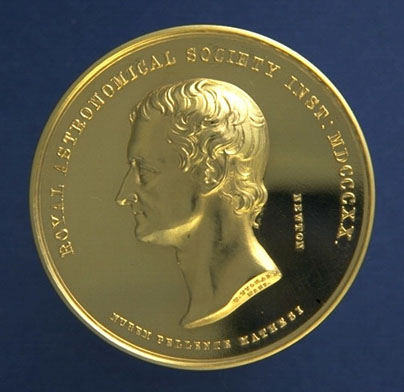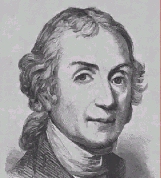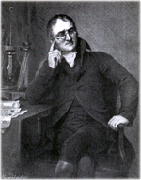The early history of chemistry
Chemistry is the science of the elements. This science deals with the properties and chemical reactions of the elements and their compounds. Chemistry also includes the study of how these elements and compounds can be formed.The history of chemistry dates back to prehistoric times. A simple reaction known as combustion is considered a chemical reaction. The history of chemistry is often divided into four periods: Black Magic,Alchemy, Traditional Chemistry and Modern Chemistry (20th Century Chemistry).
Black Magic - Prehistoric Times to The Beginning of the Christian Era
This was the era in which Sumerian, Babylonian, Egyptian and Greek cultures were flourishing. During most of this period mysticism and superstition prevailed over scientific thought. In this era most people believed that natural processes were controlled by spirits and they relied upon magic to persuade the spirits to help in their favor. Very little chemical knowledge was gathered, but some elements such as iron, gold and copper were recognized. During this time the Greek philosophers Thales and Aristotle speculated on the composition of matter. They believed that earth, air, fire and water (some others imagined a fifth substance known as "quintessence") were the basic elements which composed all matter. Toward the end of this era people learned that iron could be made from dirty brown earthen rock, and that bronze could be made by combining copper and tin. This led many to believe that if yellowness and hardness could be combined, gold would this formed. This belief that gold could be formed from other substances led to new era known as alchemy.
 Aristotle Speculated On the composition of matter
Aristotle Speculated On the composition of matter
Alchemy - The Beginning of the Christian Era to mid 17th Century
During this long era many alchemists believed that metals could be converted to gold with the aid of a mystical "thing" called a philosophers stone. The philosophers stone was never found, however many discoveries of new elements and compounds were made during this period. In the early 13th century alchemists like Roger Bacon, Albertus Magnus and Raymond Lully began to realize that the search for a philosopher's stone was futile. They believed that alchemists would better serve the world by discovering new products and new methods to improve everyday life. This started a trend in which alchemists gave up on finding the philosophers stone. An important leader in this movement was a Swiss by the name of Theophrastus Bombastus. Bombastus felt that the object of alchemy should be the cure of the sick. He believed that salt, sulfur and mercury would give health if they were present in the body in proper proportions. This was the first period of iatrochemistry. The last influential chemist in this era was Robert Boyle. In his book, "The Sceptical Chymist" Boyle rejected the leading scientific theories of his day and started the list of elements which are still recognized today. He also formulated a law relating to the volume and pressure of gasses (see Boyle's Law). In 1661 he founded a scientific society which later became known as the Royal Society of England.

Traditional Chemistry - The Mid 17th Century to mid 19th Century By this time scientists were using the "modern method" of discovery by testing theories with experiments. One of the great controversies during this period was the mystery of combustion. Two chemists, Johann Joachim Becher and Georg Ernst Stahl proposed the theory of phlogiston. This theory said that an "essence" (like hardness or yellowness) was supposed to escape during the process of combustion. No one could prove the theory of phlogiston. The first chemist proved that oxygen was essential to combustion was done by Joseph Priestly. Oxygen and Hydrogen were both discovered during this period. This is the French chemist Antoine Laurent Lavoisier to formulate the present accepted theory of combustion. This era marked the first time in which scientists used the "modern method" of testing theories with experiments. This led to a new era known as Modern Chemistry, which many also refer to as Atomic Chemistry.
 Joseph Priestly
Joseph Priestly
Modern Chemistry (20th Century Chemistry)- Mid 19th Century to Present
This is the era chemistry flourished. Lavoisier's thesis gave chemists the first sound understanding of the nature of chemical reactions. Lavoisier's work led an English schoolteacher by the name of John Dalton to formulate his atomic theory. Around the same time an Italian chemist, Amedeo Avogadro formulated his own theory (Avogadro's Law) concerning molecules and their relation to temperature and pressure. (If you are using a graphical browser, there is a picture of Amedeo Avogadro to the left.) By the middle of the 19th century, there were approximately 60 known elements. John A.R. Newlands, Stanislao Cannizzaro and A.E.B. de Chancourtois first noticed that all of these element were very much alike in structure. Their work led Dmitri Mendeleev to publish the first periodic table. (If you are using a graphical browser, there is a picture of Dmitri Mendeleev on the the right.) Mendeleev's work set the foundation of theoretical chemistry. In 1896 Henri Becquerel and the Curies discovered the phenomenon known as radioactivity. This laid the foundation for nuclear chemistry. In 1919, Ernest Rutherford became discovered that elements could be transmutated. Rutherford's work laid the basis for interpreting the structure of the atom. Soon after, another chemist, Niels Bohr finalized the atomic theory. These and other major advanced in chemistry have led to many distinct branches of chemistry. These branches include, but are not limited to: biochemistry, nuclear chemistry, chemical engineering, organic chemistry.
 John Dalton
John Dalton
Back
Fundamental Chemical Laws

 Aristotle Speculated On the composition of matter
Aristotle Speculated On the composition of matter
 Joseph Priestly
Joseph Priestly  John Dalton
John Dalton
